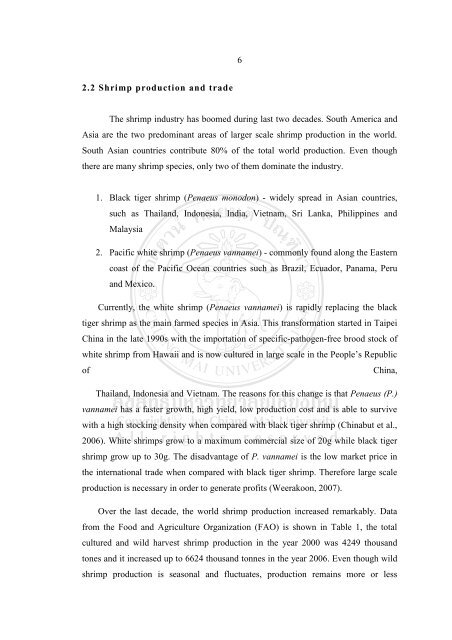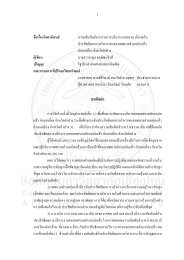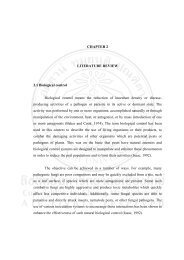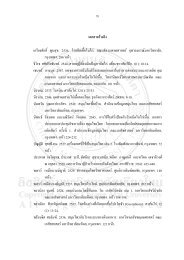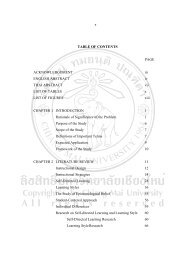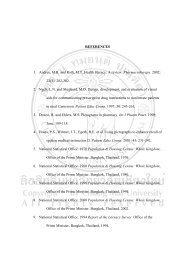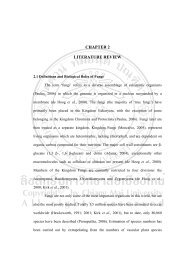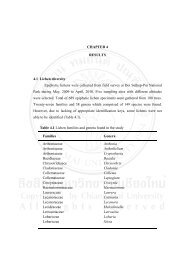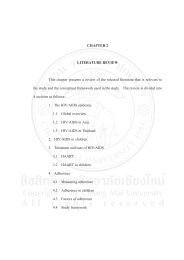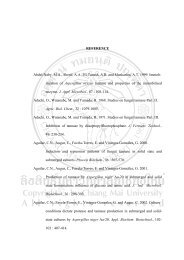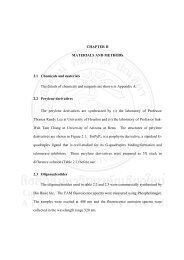prevalence and molecular characteristics of vibrio species in pre ...
prevalence and molecular characteristics of vibrio species in pre ...
prevalence and molecular characteristics of vibrio species in pre ...
You also want an ePaper? Increase the reach of your titles
YUMPU automatically turns print PDFs into web optimized ePapers that Google loves.
2.2 Shrimp production <strong>and</strong> trade<br />
6<br />
The shrimp <strong>in</strong>dustry has boomed dur<strong>in</strong>g last two decades. South America <strong>and</strong><br />
Asia are the two <strong>pre</strong>dom<strong>in</strong>ant areas <strong>of</strong> larger scale shrimp production <strong>in</strong> the world.<br />
South Asian countries contribute 80% <strong>of</strong> the total world production. Even though<br />
there are many shrimp <strong>species</strong>, only two <strong>of</strong> them dom<strong>in</strong>ate the <strong>in</strong>dustry.<br />
1. Black tiger shrimp (Penaeus monodon) - widely s<strong>pre</strong>ad <strong>in</strong> Asian countries,<br />
such as Thail<strong>and</strong>, Indonesia, India, Vietnam, Sri Lanka, Philipp<strong>in</strong>es <strong>and</strong><br />
Malaysia<br />
2. Pacific white shrimp (Penaeus vannamei) - commonly found along the Eastern<br />
coast <strong>of</strong> the Pacific Ocean countries such as Brazil, Ecuador, Panama, Peru<br />
<strong>and</strong> Mexico.<br />
Currently, the white shrimp (Penaeus vannamei) is rapidly replac<strong>in</strong>g the black<br />
tiger shrimp as the ma<strong>in</strong> farmed <strong>species</strong> <strong>in</strong> Asia. This transformation started <strong>in</strong> Taipei<br />
Ch<strong>in</strong>a <strong>in</strong> the late 1990s with the importation <strong>of</strong> specific-pathogen-free brood stock <strong>of</strong><br />
white shrimp from Hawaii <strong>and</strong> is now cultured <strong>in</strong> large scale <strong>in</strong> the People’s Republic<br />
<strong>of</strong> Ch<strong>in</strong>a,<br />
Thail<strong>and</strong>, Indonesia <strong>and</strong> Vietnam. The reasons for this change is that Penaeus (P.)<br />
vannamei has a faster growth, high yield, low production cost <strong>and</strong> is able to survive<br />
with a high stock<strong>in</strong>g density when compared with black tiger shrimp (Ch<strong>in</strong>abut et al.,<br />
2006). White shrimps grow to a maximum commercial size <strong>of</strong> 20g while black tiger<br />
shrimp grow up to 30g. The disadvantage <strong>of</strong> P. vannamei is the low market price <strong>in</strong><br />
the <strong>in</strong>ternational trade when compared with black tiger shrimp. Therefore large scale<br />
production is necessary <strong>in</strong> order to generate pr<strong>of</strong>its (Weerakoon, 2007).<br />
Over the last decade, the world shrimp production <strong>in</strong>creased remarkably. Data<br />
from the Food <strong>and</strong> Agriculture Organization (FAO) is shown <strong>in</strong> Table 1, the total<br />
cultured <strong>and</strong> wild harvest shrimp production <strong>in</strong> the year 2000 was 4249 thous<strong>and</strong><br />
tones <strong>and</strong> it <strong>in</strong>creased up to 6624 thous<strong>and</strong> tonnes <strong>in</strong> the year 2006. Even though wild<br />
shrimp production is seasonal <strong>and</strong> fluctuates, production rema<strong>in</strong>s more or less


